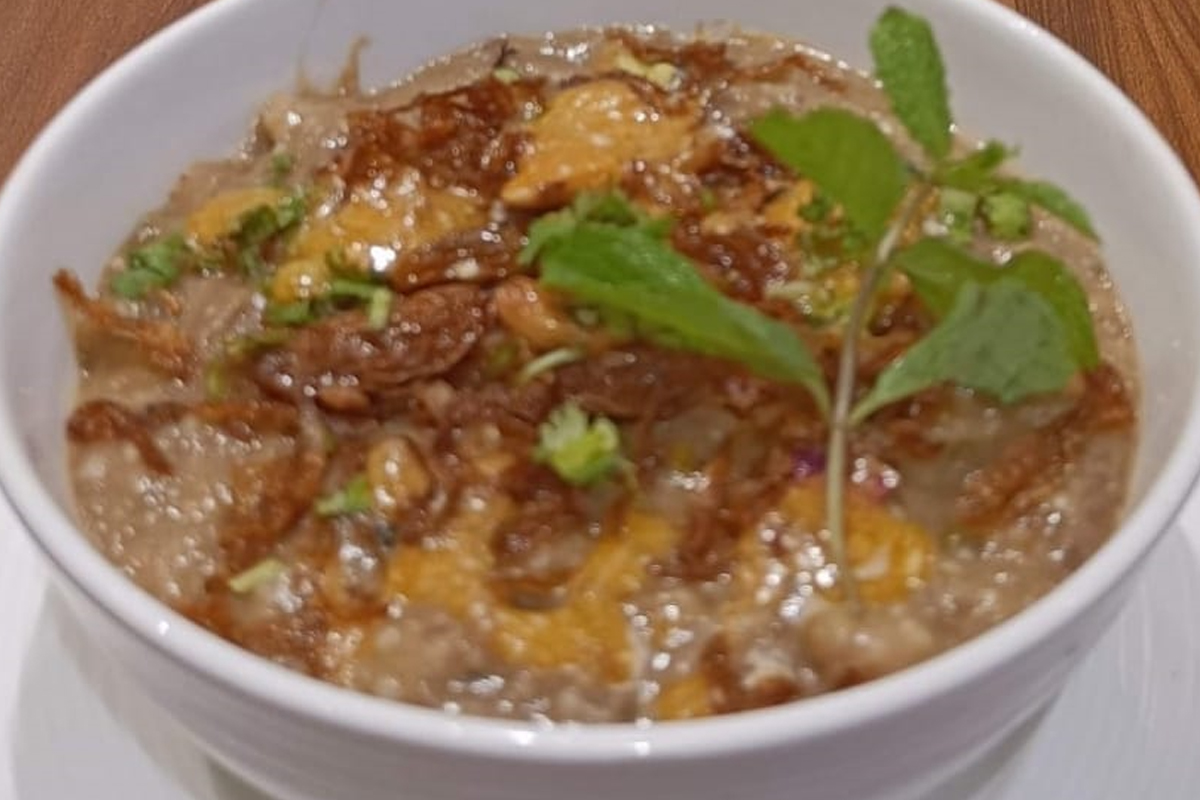Effectively managing diabetes during Ramadan
As the crescent moon signals the arrival of Ramadan, millions around the world will embark on a month-long journey of prayer and reflection.
The use of dry fruits as a topping is definitely a Middle Eastern influence. The Kolkata-style haleem differs from the Hyderabadi one in the method of preparation, texture, and use of spices.

The bhattis or brick furnaces lining up the streets signal the approach of Ramadan in Indian cities. It means the preparations for making haleem are well under way. Haleem is not just a delicacy with which Muslims break their fast; non-Muslims too make a beeline to savour the flavour of this one-pot dish.
The excitement over haleem is palpable in the streets, and the crowd around the restaurants serving this dish is a testament to that. Haleem isn’t just a meal but a cultural phenomenon that brings together people from all walks of life. No wonder haleem has earned the prestigious Geographical Indication (GI) status in Hyderabad, making it the first non-vegetarian dish to receive such recognition. The haleem scene in Kolkata mirrors that of other Indian cities, boasting a rich tradition of preparing and enjoying this sought-after dish. While the basic ingredients remain almost the same, each region puts its own unique spin on haleem.
Breaking the fast during Ramadan is a sacred ritual, and haleem plays a central role in this daily celebration. A rich blend of meat, wheat, lentils, and spices not only satisfies hunger but also nourishes the soul. This dish is usually prepared with mutton. Chicken is also used. Though slow cooking might be the common process of preparing haleem, the medley of spices used makes all the difference. Eateries serving haleem zealously guard their recipe, a mystery even James Bond, perhaps, cannot decode!
Advertisement
The origin of haleem is steeped in history. The tradition of cooking haleem dates back to 400 years ago in Iran, where it was served as tabarouk, or a token of blessing, distributed amongst masses in mosques during Ramadan and Muharram. Today, many eateries organise charity events distributing haleem to the less fortunate, since giving and sharing embody the true spirit of Ramadan.
Inspired by this ritual, Aga Hussain Zabed, an Iranian, introduced haleem to Hyderabad on a mass scale. An alternate narrative suggests that haleem originated in Arabia and was brought to India during Mughal rule. Haleem was also favoured by the Nizams and, therefore, has a royal legacy.
The use of dry fruits as a topping is definitely a Middle Eastern influence. The Kolkata-style haleem differs from the Hyderabadi one in the method of preparation, texture, and use of spices.
Ijaz Akhtar from Aminia Restaurant explains, “Mutton pieces in Kolkata-style mutton haleem are tender, not pasty. We don’t melt the meat completely.” A representative from Barkaas, an Arabian restaurant based in Kolkata, adds, “Kolkata haleem is made with lumps of mutton and lentils, resulting in a silky-smooth gravy. The creamy texture of Hyderabadi haleem is made of shredded boneless meat.” The pulpy texture of Hyderabadi haleem comes from mashing the mixture for hours with wooden stirrers, or ghota. The Pakistani khichra, the Arabic harissa, and the keşkek from Turkey are close cousins of haleem but with distinct differences in taste.
The preparation of haleem starts two months before Ramadan, when the vessels for cooking haleem are taken out of the storage room. Sherbeti gehu, ghee, potlekaghosht, elaichi, shah jeera, dalchini, kebab cheeni, kalimirch, laung, badampista, and kajuare are some of the ingredients usually used to cook haleem. It cooks for eight to ten hours, and two hours are allowed for the dish to settle. Red chilli is never used in cooking. Only black pepper is preferred. Cooking haleem is a labour-intensive process, and it is prepared in large cauldrons and served directly from the cooking vessel. It is served hot with deep-fried onions, or beresta, and a slice of lemon. Some also use mint leaves to garnish haleem. One can have haleem with accompaniments or as a standalone meal.
As the holy month unfolds, the excitement over haleem reaches a feverish pitch. Heritage establishments in Kolkata, such as Aminia, Zeeshan, Arsalan, Royal Indian Restaurant, Shiraz, Kareems and Sufiya, to name a few, prepare for the daily rush by serving up steaming bowls of haleem to eager diners.
It isn’t just a dish, but a celebration of tradition, culture, and community anywhere.
The writer is a freelance contributor
Advertisement